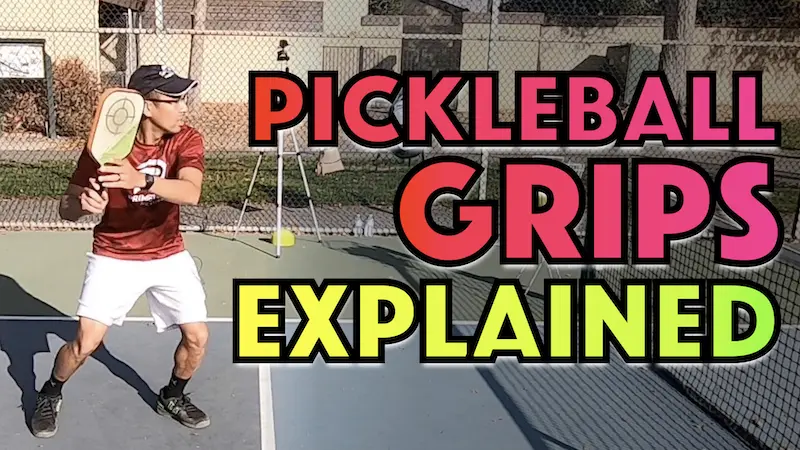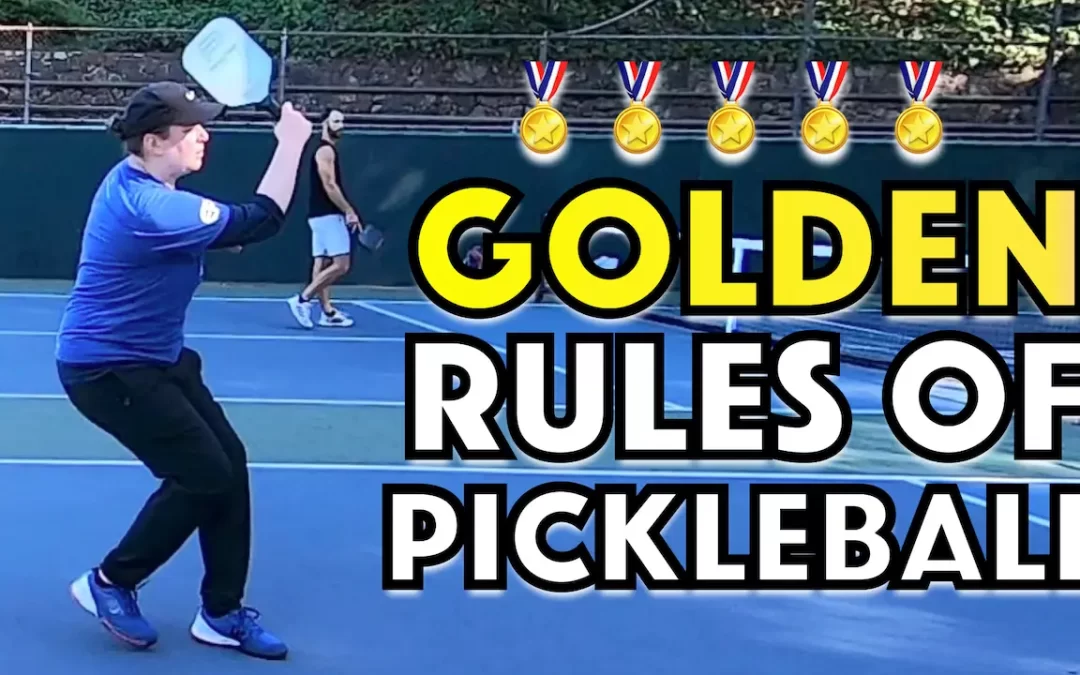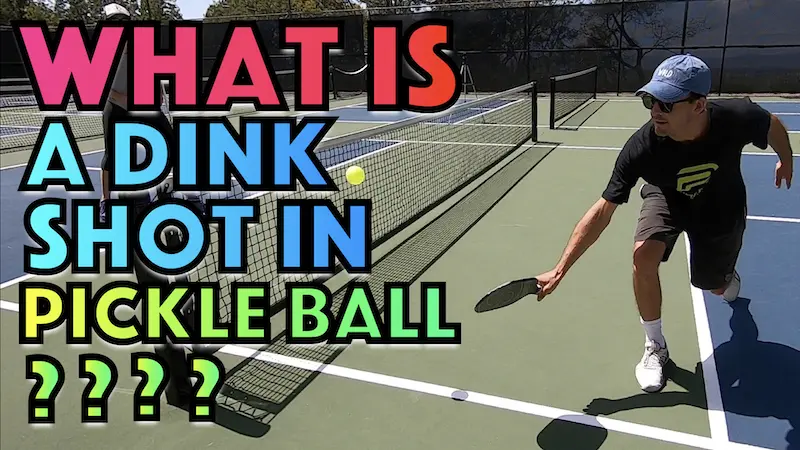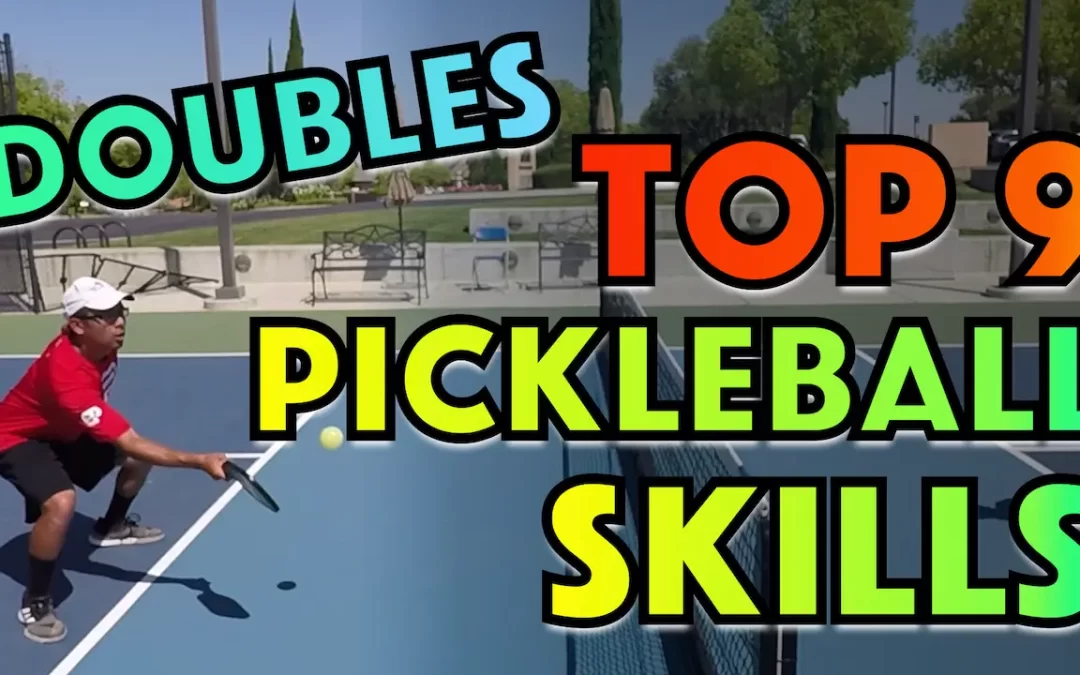Pickleball is the fastest growing sport in the U.S., with 36.5+ million players.
It is a paddle sport played with either two (singles) or four players (two doubles teams) using a paddle and a plastic or composite ball on a badminton-sized court with a net height more similar to tennis. Overall, it most closely resembles tennis, but with less running and easier hitting.
To learn about this sport, you must first learn the Pickleball basics. Our goal is to simply get you started in the right direction so you can start have fun with the game as soon as possible if you haven’t already. You’re in for a treat!
Ready to Pickle?
Pickle Concepts | How To Play Pickleball
Below are some Pickleball basics on how to play the game and familiarize yourself with its fundamental concepts.
Hopefully as a pickleball beginner, you find them easy to understand to help you improve your understanding.
As far as pickleball scoring goes, in a nutshell, you can win a game with a score of 11 points as long as you win by 2 points (ie. 11-9). So in other words, the game can continue on past a score of 11 until one team wins by a 2 point margin. (ie. 17-15)
Singles and doubles can be played, though playing doubles is more common.
Important Concepts Of Pickleball
If you are coming into the sport from another racquet sport like tennis, you may see a few similarities, but pickleball is entirely different with its scoring and rules.
Here are the most important concepts for those seeking to learn pickleball basics, along with some official rules lobbed in:
- It can be played either one-on-one (singles) or in pairs (doubles), so get your friends to join with you
- The goal is to hit the ball over the net with a paddle and prevent your opponent from returning it to your side
- The ball may only bounce once within the opponent’s field of play; if it bounces outside, the shot is null and void. If it hits the ground twice, the team that took the shot earns a point
- Beginning from the right, the serve is made crosscourt or diagonally
- When you have at least one foot inside the Non-Volley Zone (NVZ), or “The Kitchen”, you cannot hit the ball without it bouncing
- Points can only be scored by the player or pair who is serving
- The set or game is won by the player or team who scores 11, 15, or 21 points with a two-point advantage over the opponent. Each match is made up of a maximum of three sets.
- The rule of “two bounces” states that the first shot of each player or team in the opposing field must bounce once on each side. Once this occurs (i.e., from each player’s or team’s second shot), the ball can be hit without allowing it to bounce.
Now that you have some key basics down, you are half way there to becoming a Pickler.
Serves
The game always starts with a serve. There are a number of different types of serves (traditional, power, drop, etc.), but we will stick with the basics.
For now, just understand you need to get the ball over the net to the receiver.
The server must call out the score before serving. More on scoring later.
The serve is made by hitting the ball from behind the baseline, and it must bounce in the cross-court service area in your opponents side of the court. For example, if I serve from the right, the ball must bounce in the opposite field’s right service area.
The serve must be clean, meaning it must not touch the net and must not land in the non-volley zone or The Kitchen.
The serve must land beyond the non-volley zone line. The non-volley zone line is considered part of the kitchen. At any other time, any ball that lands on a line is considered in.
Didn’t your mama ever tell you, “You need to stay out of the kitchen.”
If it touches the net and land in the cross-court service area beyond the non-volley zone line, the serve can be repeated. This is known as a Let, and it can be done until the server serves correctly.
Check out the video below about Drop Serves:
Pickleball Do & Donts | Pickleball Rules To Live By
Now that you have some basics and have already started working on your Drop Serve, let’s explore a little deeper some of the basic concepts we mentioned above.
Double Bounce Rule
It is also called the “The Two Bounce Rule”. This rule is very important in the basics of Pickleball because you are not permitted to volley the ball unless it has previously bounced once in each field. Hence, double-bounce rule is appropriately named.
As a result, the receiver of the service must always allow the ball to bounce in his court before returning it and the serving team must also let the ball bounce when the return of serve comes back over to them.
You can hit the ball in the air after the third shot. Well..as long as you are not in the kitchen, which leads us to our next basic concept.
The Kitchen, Non-Volley Zone
This area, also known as the Kitchen, has some special official rules that you must understand completely if you, as a Pickleball player, want to play this game perfectly:
- The actual Non-volley lines and sidelines are considered part of the non-volley zone
- The ball can’t bounce within this non-volley zone line when you serve.
- As the name implies, volleying (a.k.a taking the ball out of the air) is not permitted in the non-volley zone and this includes the non-volley zone line.
- You cannot step on or be inside the non-volley line when volleying. If you, or any of your apparel or equipment, end up inside this zone by way of your momentum after volleying, regardless of the outcome of the volley, you have committed a foul.
- It is permissible to be standing with one or both feet inside the non-volley zone if the ball bounces before you make contact with it. You can enter the non-volley zone before it has bounced long as you ultimately do, in fact, hit the shot after the bounce.
- If you fall off the court, after volleying to avoid stepping on the kitchen, it will not be considered a foul.
Between the Lines | Pickleball Court Layout
Once you have the basics down with the rules, it is time to enter the court.
Pickleball Court Dimensions
- For singles and doubles play, the total court size is the same: 20 feet (6.10 m) wide by 44 feet (13.41 m).
- The dimensions of the court should be taken from the outside of the overall perimeter and non-volley zones.
- All lines must be 2″ (5 cm) thick and of the same color.
- The color of the lines must contrast sharply with the overall color scheme of the playing area.
- The minimum recommended playing area is 30ft (9.14m) wide x 60ft (18.29m) long, but courts with a total area of 40m x 64m are preferred.
Pickleball Court Lines & Area
- The net in the middle of the court separates the non-volley zone, which is 14 feet long in total. This results in two 7-foot non-volley zones on each side of the court.
- The remaining court area (15 feet) is divided into two boxes, one on each side of the court, which serves as serving zones.
- The centerline, which runs from the back of the non-volley zone to the baseline, separates the service zones.
Pickleball Net Dimensions
- The pickleball net, like those used in other racket sports, should be made of a mesh fabric that does not allow the ball to pass through it.
- The posts at each end of the net must be separated by a space measuring 22 feet (6.71 m) from the inside of each post, and the maximum diameter of the post cannot exceed 3 inches.
- A 2″ (5 cm) seaming tape edge that passes over the top of the net cord or cord is required on the top of the pickleball net.
- The middle of the net must have a center strap that raises the net to a height of 34″ (86.36 cm); all USAPA and IFP compliant pickleball nets will have a center strap.
- The bottom of the net may touch the court surface, but it must not interfere with or alter play by obstructing the ball.
Equipment Of Pickleball
To play this sport, you will need a set of paddles and at least one ball, in addition to the court and the net.
It differs from table tennis in that the Pickleball paddle is larger (though not too heavy), and the ball is much larger and has holes. The pickleball looks similar to a wiffle ball, but a pickleball is a little heavier and has more holes.
Every Pickleball beginner should know that, as a result, Pickleball is slower than tennis, making it a more tactical game with longer points.
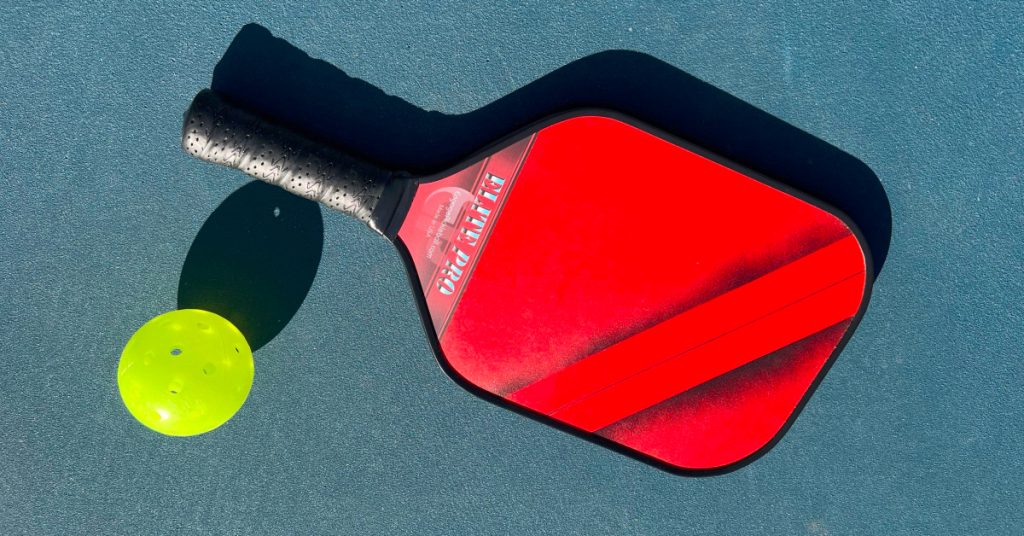
Pickleball Scoring Basics
To correctly keep track of the game’s score, we must consider a coupe of factors. There are some differences between singles and doubles scoring.
All Games
- The score will be called out by the server immediately preceding the serve
- The points of the serving team are always spoken first, followed by the points of the opposing team.
- You can only score if you are serving
Singles Scoring
- There is no second server, so you only have to call out: Server score, Receiver score
- You serve from the right side when your score (server) is even and serve from the left side when your score is odd.
- The receiver always lines up diagonally opposite
Doubles Scoring
- The score is called out as 3 numbers: Server score, Receiver score, Server number of 1 or 2
- The first server will keep serving until their team loses a rally by making a fault; then the second server on their team will serve.
- If the second server also loses the serve, then it will go to the other team and the player on the right will serve first.
Final Thoughts
The Pickleball game is one of the funnest games once it is fully understood. It doesn’t take too long to get familiar with the basics so you can be game ready in no time. It is no wonder why there are more and more courts being built in the past year and it doesn’t look like there’s any signs of that slowing down.
While we dove into the pickleball basics, you really want to just get out there to learn and play. The main thing about learning is continuous practice and also trying to watch previously played games. Things will be come clear as you go.
Get out there and get into the game!


